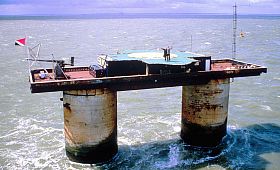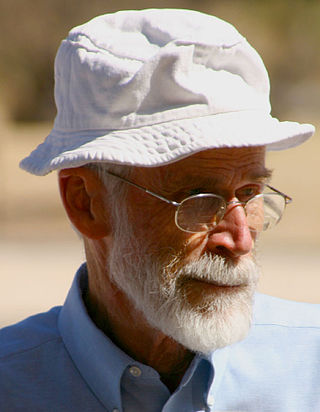
Atlantis is a fictional island mentioned in Plato's works Timaeus and Critias as part of an allegory on the hubris of nations. In the story, Atlantis is described as a naval empire that ruled all Western parts of the known world, making it the literary counter-image of the Achaemenid Empire. After an ill-fated attempt to conquer "Ancient Athens," Atlantis falls out of favor with the deities and submerges into the Atlantic Ocean. Since Plato describes Athens as resembling his ideal state in the Republic, the Atlantis story is meant to bear witness to the superiority of his concept of a state.

The Bahamas, officially the Commonwealth of The Bahamas, is an island country within the Lucayan Archipelago of the West Indies in the Atlantic Ocean. It contains 97% of the Lucayan Archipelago's land area and 88% of its population. The archipelagic state consists of more than 3,000 islands, cays, and islets in the Atlantic Ocean, and is located north of Cuba and northwest of the island of Hispaniola and the Turks and Caicos Islands, southeast of the U.S. state of Florida, and east of the Florida Keys. The capital is Nassau on the island of New Providence. The Royal Bahamas Defence Force describes The Bahamas' territory as encompassing 470,000 km2 (180,000 sq mi) of ocean space.

Hispaniola is an island in the Caribbean that is part of the Greater Antilles. Hispaniola is the most populous island in the West Indies, and the region's second largest in area, after the island of Cuba. The 76,192-square-kilometre (29,418 sq mi) island is divided into two separate nations: the Spanish-speaking Dominican Republic to the east and the French/Haitian Creole-speaking Haiti to the west. The only other divided island in the Caribbean is Saint Martin, which is shared between France and the Netherlands.

A micronation is a political entity whose representatives claim that they belong to an independent nation or sovereign state, but which lacks legal recognition by any sovereign state. Micronations are classified separately from de facto states and quasi-states; they are also not considered to be autonomous or self-governing as they lack the legal basis in international law for their existence. The activities of micronations are almost always trivial enough to be ignored rather than disputed by the established nations whose territory they claim—referred to in micronationalism as "macronations". Several micronations have issued coins, flags, postage stamps, passports, medals and other state-related items, some as a source of revenue. Motivations for the creation of micronations include theoretical experimentation, political protest, artistic expression, personal entertainment and the conduct of criminal activity. The study of micronationalism is known as micropatriology or micropatrology.
Wrecking is the practice of taking valuables from a shipwreck which has foundered or run aground close to shore. Often an unregulated activity of opportunity in coastal communities, wrecking has been subjected to increasing regulation and evolved into what is now known as marine salvage.

Nord-Ouest (French) or Nòdwès is one of the ten departments of Haiti as well as the northernmost one. It has an area of 2,102.88 km2 (811.93 sq mi) and a population of 728,807. Its capital is Port-de-Paix.

Tortuga Island is a Caribbean island that forms part of Haiti, off the northwest coast of Hispaniola. It constitutes the commune of Île de la Tortue in the Port-de-Paix arrondissement of the Nord-Ouest department of Haiti.

Dry Tortugas National Park is an American national park located about 68 miles (109 km) west of Key West in the Gulf of Mexico, in the United States. The park preserves Fort Jefferson and the several Dry Tortugas islands, the westernmost and most isolated of the Florida Keys. The archipelago's coral reefs are the least disturbed of the Florida Keys reefs.

Spencer Heath McCallum, commonly known as Spencer MacCallum, was an American anthropologist, business consultant and author. He was especially noted for his discovery of the pottery of the town of Mata Ortiz, Chihuahua, Mexico.
Atlantis is a legendary island first mentioned by Plato.

The Abaco Islands lie in the northern Bahamas, located about 193 miles east of Miami, Florida. The main islands are Great Abaco and Little Abaco, which is located just west of the northern tip of Great Abaco. There are several smaller barrier cays, of which the northernmost are Walker's Cay and its sister island Grand Cay. To the south, the next inhabited islands are Spanish Cay and Green Turtle Cay, with its settlement of New Plymouth, Great Guana Cay, private Scotland Cay, Man-O-War Cay, and Elbow Cay, with its settlement of Hope Town. Southernmost are Tilloo Cay and Lubbers Quarters. Another of note off Abaco's western shore is Gorda Cay, now a Disney-owned island and a cruise ship stop renamed Castaway Cay. Also in the vicinity is Moore's Island. On the Big Island of Abaco is Marsh Harbour, the Abacos' commercial hub and the Bahamas' third largest city, plus the resort area of Treasure Cay. Both have airports. A few mainland settlements of significance are Coopers Town and Fox Town in the north and Cherokee and Sandy Point in the south. Administratively, the Abaco Islands constitute seven of the 31 Local Government Districts of the Bahamas: Grand Cay, North Abaco, Green Turtle Cay, Central Abaco, South Abaco, Moore's Island, and Hope Town.
Concrete ships are built primarily with ferrocement hulls, reinforced with steel bars. This contrasts against more traditional materials, such as pure steel or wood. The advantage of ferrocement construction is that materials are cheap and readily available, while the disadvantages are that construction labor costs are high, as are operating costs. During the late 19th century, there were concrete river barges in Europe, and during both World War I and World War II, steel shortages led the US military to order the construction of small fleets of ocean-going concrete ships, the largest of which was the SS Selma. United States Maritime Administration (MARAD) designation for concrete ships-barges was Type B ship. Few concrete ships were completed in time to see wartime service during World War I, but during 1944 and 1945, concrete ships and barges were used to support U.S. and British invasions in Europe and the Pacific. Since the late 1930s, there have also been ferrocement pleasure boats.

Sea Base, formerly known as Florida National High Adventure Sea Base, is a high adventure program base run by the Boy Scouts of America (BSA) in the Florida Keys. Its counterparts are the Philmont Scout Ranch in northern New Mexico, the Northern Tier National High Adventure Bases in Ely, Minnesota as well as Manitoba and Ontario in Canada, and The Summit Bechtel Family National Scout Reserve near the New River Gorge National Park in southern West Virginia.

Hurricane Gordon was an erratic, long-lived, and catastrophic late-season hurricane of the 1994 Atlantic hurricane season. The twelfth and final tropical cyclone of the season, Gordon formed as a tropical depression in the southwestern Caribbean on November 8. Without strengthening, the depression made landfall on Nicaragua. Later on November 10, the system began to strengthen as it tracked further from land, and it quickly strengthened into Tropical Storm Gordon, the seventh named storm that season. Gordon also made landfalls in Jamaica and Cuba while a minimal tropical storm. It entered the southwestern Atlantic while resembling a subtropical cyclone. By the time it entered the Gulf of Mexico, the storm was fully tropical again. Tropical Storm Gordon later crossed the Florida Keys, and turning to the northeast it made landfall in Fort Myers, Florida. Gordon strengthened after it re-entered the Atlantic Ocean, becoming a hurricane on November 17. It briefly threatened North Carolina while turning to the northwest, although it turned to the south and weakened. Gordon deteriorated into a tropical depression and struck Florida again at that intensity on November 20. It turned to the north and dissipated the next day over South Carolina.

The Dry Tortugas Light is a lighthouse located on Loggerhead Key, three miles west of Fort Jefferson, Florida. It was taken out of operation in 2015. It has also been called the Loggerhead Lighthouse. It has been said to be "a greater distance from the mainland than any other light in the world."
Spencer Heath was an American engineer, attorney, inventor, manufacturer, horticulturist, poet, philosopher of science and social thinker. A dissenter from the prevailing Georgist views, he pioneered the theory of proprietary governance and community in his book Citadel, Market and Altar. His grandson, Spencer Heath MacCallum, popularized and expounded on his ideas, most notably in his book The Art of Community.

Hurricane Hanna was a moderately powerful but deadly tropical cyclone that caused extensive damage across the Western Atlantic, mostly in the Turks and Caicos Islands and the East Coast of the United States. The eighth named storm and fourth hurricane of the 2008 Atlantic hurricane season. It formed east-northeast of the northern Leeward Islands on August 28. Initially, the storm struggled to intensify due to moderate wind shear as it moved westwards towards the Bahamas. By August 31, Hanna had drifted southwards and began intensifying while over the Bahamas; it attained its peak intensity as a Category 1 hurricane while over the Turks and Caicos Islands. Due to the outflow of the nearby Hurricane Gustav, Hanna weakened back into a tropical storm the next day as it began to drift northwestwards towards the Southeastern United States. The storm struck Myrtle Beach, South Carolina, before moving up the Eastern Seaboard to become an extratropical cyclone as it moved by New England into Atlantic Canada early on September 7. The system raced across the North Atlantic, sweeping west of Great Britain on September 10 before turning north and becoming absorbed by a stronger extratropical cyclone between Iceland and Greenland late on September 12.

Anton Dohrn was a motor yacht built during 1911 and delivered to the Carnegie Institution of Washington in June 1911 for use at its Department of Marine Biology laboratory at Dry Tortugas, Florida. The institution leased the vessel to the United States Navy for use as a patrol boat during World War I to serve as USS Anton Dohrn 5 October 1917 – 2 January 1919. The vessel remained in service for the institution until 1940 when Anton Dohrn was given to the Woods Hole Oceanographic Institution which used the vessel until 1947 for work between the Gulf of Maine and New Jersey. In 1947 the vessel was sold for use as a mail boat between New Bedford and Cuttyhunk Island.

Hurricane Joaquin was a powerful tropical cyclone that devastated several districts of The Bahamas and caused damage in the Turks and Caicos Islands, parts of the Greater Antilles, and Bermuda. It was also the strongest Atlantic hurricane of non-tropical origin recorded in the satellite era. The tenth named storm, third hurricane, and second major hurricane of the 2015 Atlantic hurricane season, Joaquin evolved from a non-tropical low to become a tropical depression on September 28, well southwest of Bermuda. Tempered by unfavorable wind shear, the depression drifted southwestward. After becoming a tropical storm the next day, Joaquin underwent rapid intensification, reaching hurricane status on September 30 and Category 4 major hurricane strength on October 1. Meandering over the southern Bahamas, Joaquin's eye passed near or over several islands. On October 3, the hurricane weakened somewhat and accelerated to the northeast. Abrupt re-intensification ensued later that day, and Joaquin acquired sustained winds of 155 mph (250 km/h), just short of Category 5 strength.

The effects of Hurricane Dorian in the Bahamas in 2019 were among the worst experienced for any natural disaster in the country. Hurricane Dorian struck the Abaco Islands as a Category 5 hurricane on September 1, and a day later hit Grand Bahama Island at the same category. The hurricane then stalled over Grand Bahama for another day, finally pulling away from the island on September 3. Damage amounted to US$3.4 billion, and there were at least 74 deaths in the country. Another 282 people were left missing after the hurricane.


















